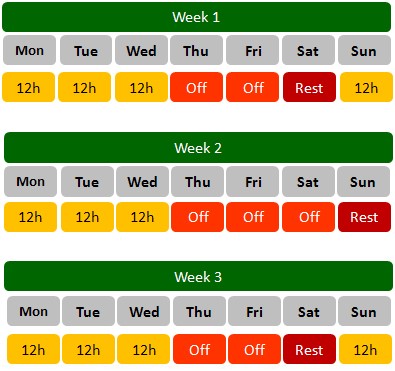4-Day Compressed Work Week (4/40 Schedule)
This is one of the most common schedules for employees or workmen not covered under Part IV of the Employment Act . Under a 4-day work week schedule, employees work four 10-hour days and take the fifth day off (See example A below).
To ensure better coverage of responsibilities, some organisations may request that employees take two half days off instead of an entire day (See example B below).
If your employees or workmen are covered under Part IV of the Employment Act, you may consider a four and a half day workweek, where employees work four 9-hour days and one 4-hour day (See example C below).

Above: Examples A to C
A 4-day work week schedule is most appropriate for office-based jobs that do not require many hours of overtime.



